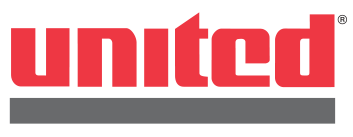Tite Liner® System
United Pipeline Systems developed the Tite Liner® system in 1985. Since then, over 80 million feet of pipelines on six continents have been lined and protected with our internal pipe lining system.
The Tite Liner® system begins as a thermoplastic pipe liner that has a larger outside diameter than the inside diameter of the steel pipe it protects. A wire line cable is sent through a section of pipeline and is then attached to the liner pipe. The wire line pulls the internal pipe lining system through the roller reduction box which is positioned at the insertion end of the pipeline section. The liner pipe is compressed radially as it passes through the roller reduction box. This temporary reduction provides sufficient clearance between the steel pipe and the liner pipe to allow insertion.
Until the pulling is complete, the liner is under tension, causing it to remain at a reduced diameter. When the tension is released, the liner pipe expands and creates a tight fit against the internal wall of the steel pipe. Following relaxation of the inner pipe, the polyethylene flange-fittings are attached and the line is ready for bolt-up and testing. Depending on diameter, bends, terrain and condition of the steel, the maximum section length (pull length) can be up to one mile.
In new construction, the steel pipeline is cut into sections that allow for the insertion of the pipe lining system.
-
The Tite Liner® RT system is a raised temperature polyethylene material specifically designed for the severe conditions present in oil & gas and industrial environments. The system utilizes PE-RT resin, a bimodal high-density polyethylene resin technology that enhances its high temperature performance.
These liners are intended for use in pipeline systems where extreme conditions exist. The Tite Liner® RT system offers a temperature rating of up to 180°F (82°C) and a non-continuous use temperature up to 203°F (95°C).
• Highlights of the Tite Liner RT® system
• High temperature resistance - up to 203°F (95°C)
• Eliminates internal corrosion in severe applications
• Chemically compatible in broad oil & gas applications
• Withstands highly oxidative conditions
• Superior notch and scratch resistance
• Superior resistance to rapid crack propagation
• Increased flow capacity with reduced friction loss
• Extended service life resulting in lower cost of ownership
• Reliable and safe performance record -
United Pipeline System’s Tite Liner® HC system is a high performance thermoplastic lining system designed for severe conditions present in oil & gas and industrial environments. The Tite Liner® HC system utilizes Evonik's VESTIMID® NRG polyamide 12 resin that provides excellent protection in hydrocarbon service and elevated temperatures while reducing permeation.
Tite Liner® HC system is an excellent choice for the oil & gas and petrochemical industries due its outstanding corrosion protection, even in the harshest environments. Our custom lined pipe systems provide a complete corrosion resistant solution, significantly extending the operational life of your infrastructure.
Highlights of the Tite Liner® HC system
• High temperature resistance – up to 210ºF (100ºC)
• Compressed fit liner utilizing the Tite Liner® system
• Excellent performance in hydrocarbon service
• Enhanced resistance to collapse and buckling
• Improved performance in high sour gas environments with ultra-low gas permeation
• Extended service life resulting in lower cost of ownership versus alternatives such as CRA
• Reliable and safe performance recordPerformance highlights
• Extends the application range of Tite Liner® PE
• Excellent mechanical strength in crude oil up to 100°C
• Good chemical resistance under sour gas conditions
• Improved reliability of Tite Liner® PE in hydrocarbon service
• Higher tensile modulus
• Lower swelling in oil
• No loss of mechanical strength after saturation in oil
• Improved abrasion resistance
• Higher critical pressure
• Reduces venting needs and improves environmental performance
• Lower BTX permeation
• Lower gas permeation

